The Ultimate Guide to Watercolor Paints: Pans, Tubes, or Liquid
Last Updated: October 30, 2025
When it comes to watercolor paints, there are three major types: pans, tubes, and liquids. So which one should you buy? These different kinds of watercolor have their pros and cons, so it's essential to understand them before purchasing. This blog post will look at each type of watercolor and help you decide which one is best for you.
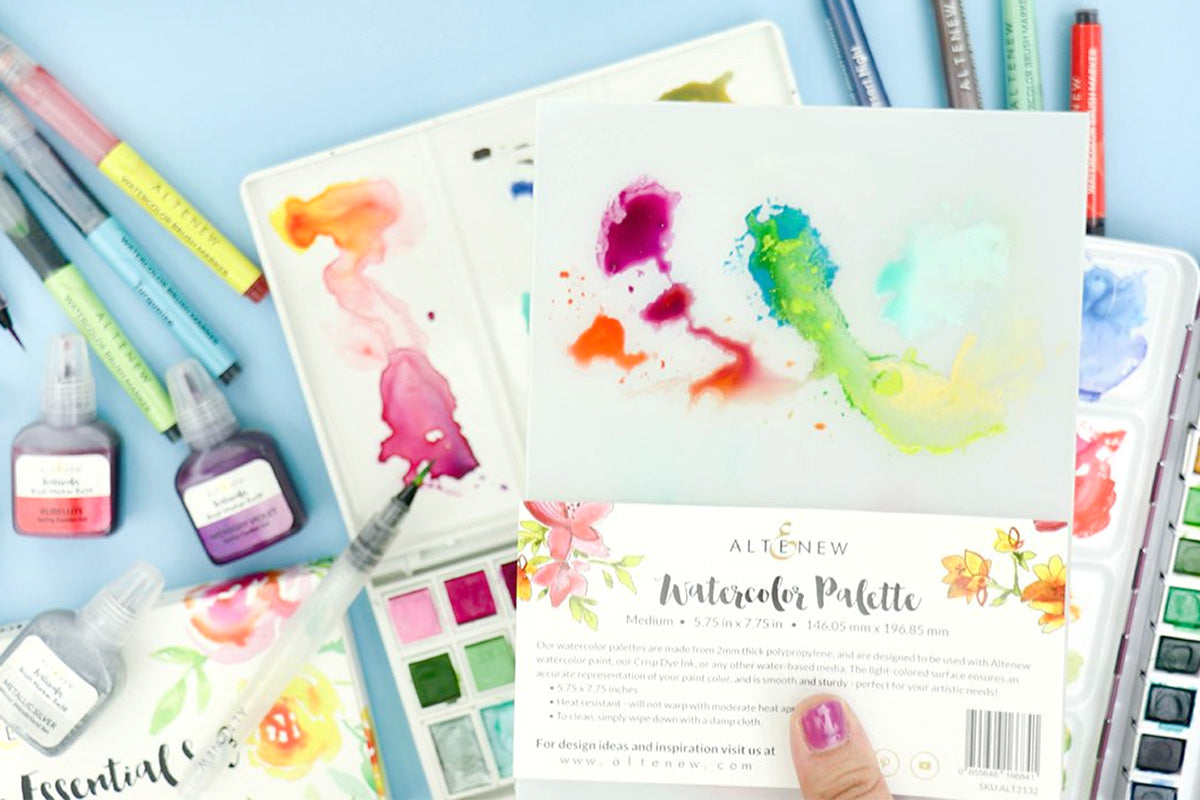
Altenew Watercoloring Products
Types of Watercolor
1. Watercolor Pans
Pans are the most popular type of watercolor. They are portable, easy to use, and come in various sizes depending on your needs. They are available in numbered sets with several pre-made color palettes. The most common beginner watercolor pan sets are 12-color sets containing primary colors, a few secondary colors, and neutral colors. These sets typically include a brush and mixing tray— just what beginners need! High-quality watercolor pans are a great way to get started with watercolor painting if you don’t want to spend too much on pricier watercolor paints just yet.
Altenew currently offers 4 watercolor pan sets you can play with. Let’s take a look at their comparisons below:
|
Watercolor 36 Pan Set |
Artists' Watercolor 24 Pan Set |
Metallic Watercolor 14 Pan Set |
Watercolor Essential 12 Pan Set |
|
36 vibrant watercolor half pans |
24 individually wrapped half pans |
14 Rich Vibrant Metallic Colors in half pans |
12 vibrant watercolor in circular half pans |
|
Stored in a Plastic Case |
Stored in a Metal Case |
Stored in a Metal Case |
Stored in a Metal Case |
|
Comes with a watercolor brush |
Doesn't come with a watercolor brush |
Doesn't come with a watercolor brush |
Comes with a watercolor brush |
|
Student-Grade |
Artist-Grade |
Student-Grade |
Student-Grade |
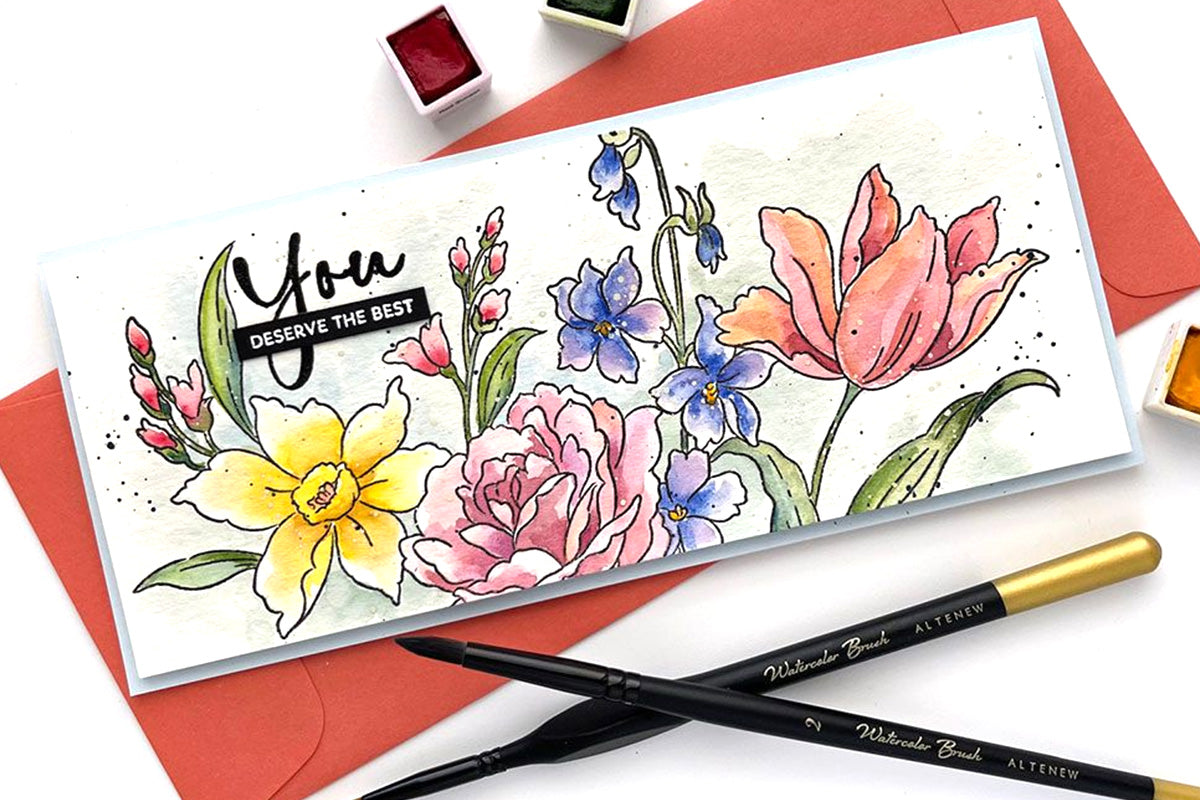
Slimline Floral Card Colored With Watercolor
How to Use Watercolor Pans
- To use watercolor pans, start by wetting your brush, then dip the brush into the pan. The water will help dilute and activate the paint and make it easier to spread on your paper or mixing tray.
- You can even use a spray bottle of water and spritz it on your pans to dilute them.
- To mix colors from watercolor pans, pick up your first diluted color with a brush and transfer it to your palette.
- Repeat the same for your second, and gradually mix the colors on the palette until you are satisfied with the results.
- Experiment with different watercoloring techniques like dry-brushing, wet-on-wet, or even lifting color off the paper with a damp sponge to create different effects.
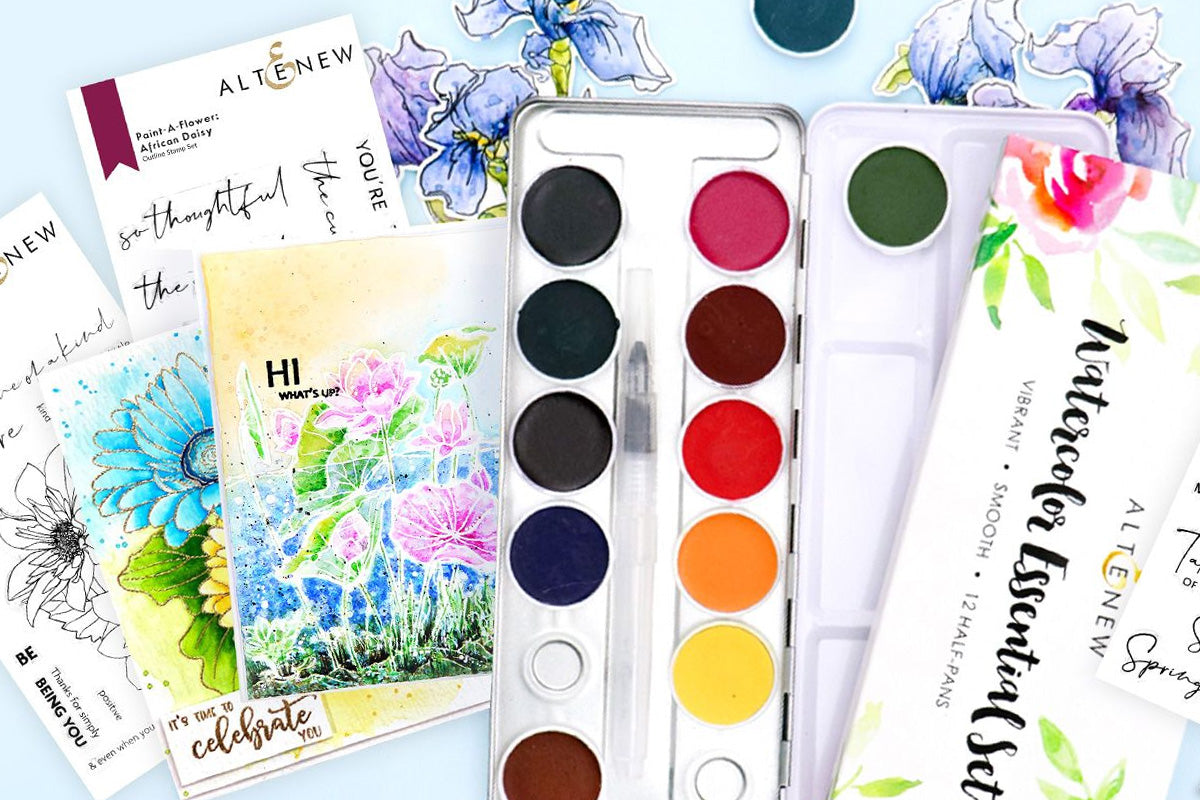
Clear Stamp Set and Watercolor Bundle
Pros & Cons of Watercolor Pan Sets
Watercolor pans are a solid form of watercolor paint in metal or plastic cases. These trays contain pans of watercolor that can be individually replaced or refilled. One great thing about these sets is that you can customize them with the colors you want to use. These sets are also expandable as they typically have more space if you want to add more pans.
Watercolor pans are great for artists on the go because the pans dry out quicker than tubes. There is also less preparation needed because all you have to do is wet the pans, and you can paint immediately. Clean up afterward would simply be closing your watercolor set.
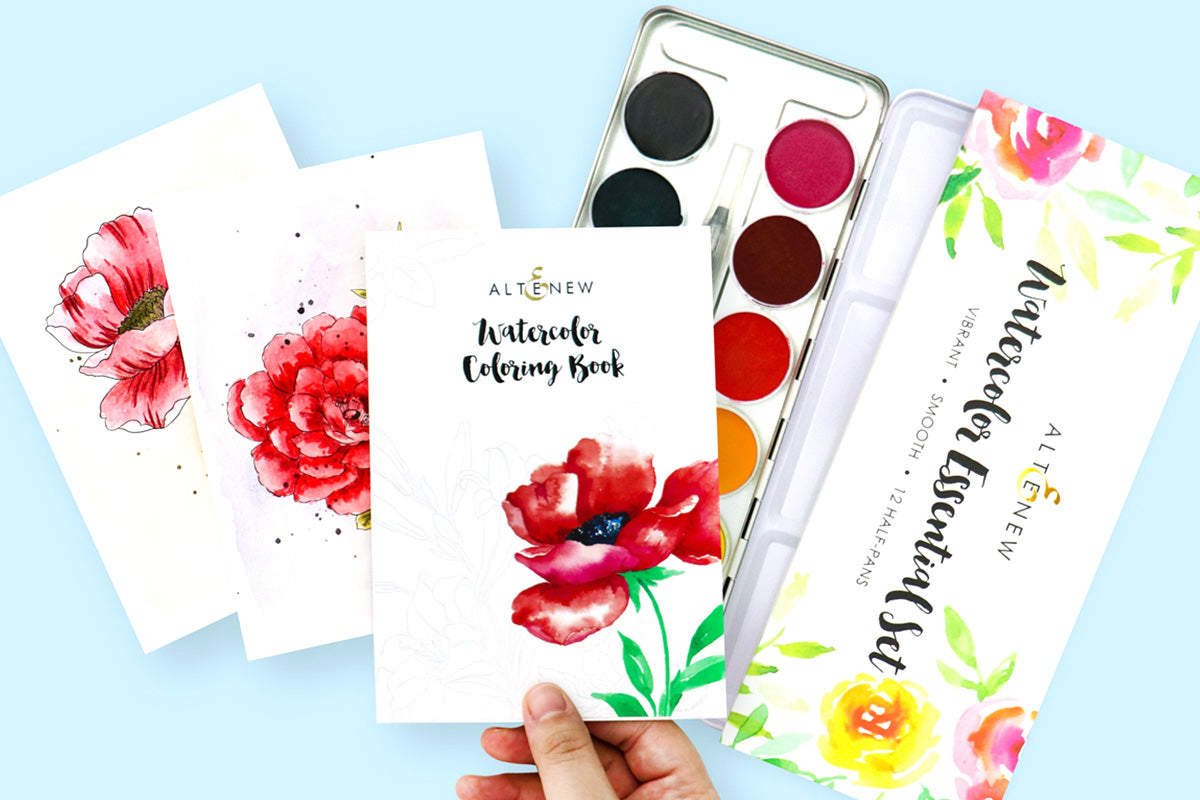
Beautiful Floral Images From a Coloring Book
On the downside, watercolor pan sets dry out too much that they sometimes form cracks. It doesn’t affect the paint’s quality. However, it sure does give your brushes a rough time. It is also difficult to pick up colors from the small pans with big brushes, so you have to use smaller brushes at first for transferring. These types are also easy to “ruin” or get the colors dirty unless you diligently wash your brushes before dipping into another color.
All types of watercolor paints are vibrant. However, when it comes to “budget” watercolor pan sets, they are often less pigmented. On that note, purchase high-quality watercolor pan sets.
Pros
|
Cons
|
2. Watercolor Tubes
Watercolor tubes aren’t as popular as pans for beginners. They are somewhat portable thanks to their packaging. Watercolor tubes are a bit more expensive than watercolor pan sets. However, if preferred, getting the primary colors and neutral colors like black, white, and brown is already a good watercolor tube set for beginners.
How to Use Watercolor Paint Tubes
- Watercolor paint tubes come in sealed metal tubes— like tiny toothpaste tubes.
- To use these tubes, uncap them and squeeze out just a tiny amount of the paint onto a mixing tray or watercolor palette. A little goes a long way! Add your second color and mix these colors directly with a brush, or add water to dilute them according to the hue that you need.
- Watercolor paint tubes are also used to refill pan sets or to create your own palette from empty watercolor palettes.

Pros & Cons of Watercolor Tubes
Watercolor tubes are more concentrated than other watercolors because they are less likely to contain fillers and binders. Given that, they require less water to achieve the desired color. Most watercolor artists will tell you that watercolor tubes are the way to go if you want to get the true watercolor experience. After all, watercolors are meant to be used with water, and tubes provide a more concentrated form of color that is easier to control when mixed with water.
One great thing about watercolor tubes is it offers a better experience when mixing custom shades. You can save these new shades in a pan or cake. You can even recreate these shades much more easily than the ones you create with watercolor pan sets or even liquids because you know exactly how much of the tubed paint you have used.
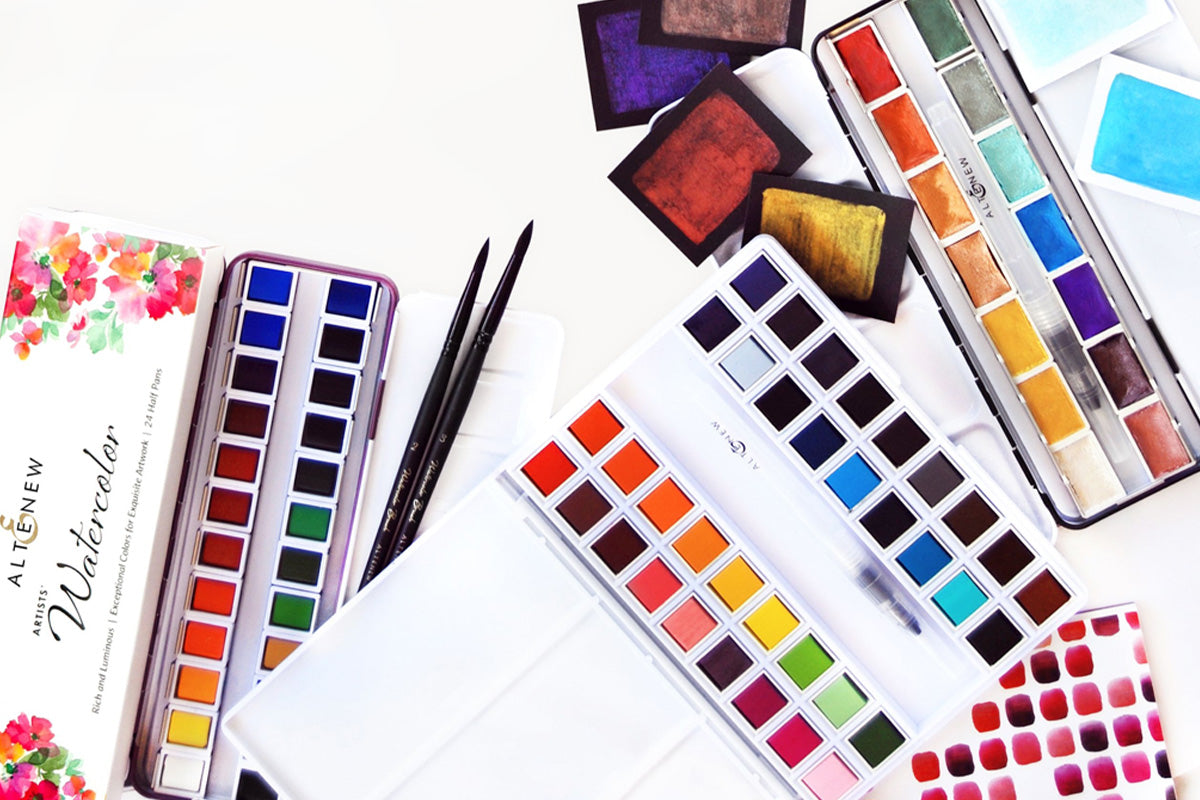
Gorgeous Altenew Watercolor Pan Sets
Some drawbacks to using watercolor tubes are the mess and waste. It can be easy to squeeze out too much paint from watercolor tubes accidentally! Unless you can use all the colors you’ve squeezed out, it helps to squeeze them onto an empty watercolor set or a mixing tray with covers or lids.
Also, watercolor tubes can be more difficult to work with than pans or liquids because they are more concentrated. Using watercolor tubes requires more experience and knowledge of mixing colors in general. In that case, it might be best to stick with the pan set if you're just starting out with watercolors.
Pros
|
Cons
|
3. Liquid Watercolor or Watercolor Paint Bottles
Liquid watercolors are great for beginners who want to get down with trying watercolor techniques. The liquid form offers the convenience of skipping the whole process of activating the watercolors. They are also widely used in paper crafting and card making! They tend to be the most concentrated and pigmented of all the types, so you can achieve very bold and bright colors.
Liquid watercolors are a bit pricier but definitely worth it. They are sold in sets or individual bottles. For beginners, you can purchase a primary set of liquid watercolors and simply mix colors to get other hues. They are somewhat portable because they come in bottles, but perhaps not for unconditioned transportation or air travel.

Colors From the Autumn Festival Liquid Watercolor - Brush Marker Refill Bundle
How to Paint With Liquid Watercolors
Liquid watercolor paint is a versatile and easy-to-use medium used for various painting and crafting projects.
- They can be diluted with water to create different effects like watercolor pans and tubes. They come in bottles with either a pipette for extracting or nozzles for pouring out the paint. You can transfer the paint directly on paper or onto a palette for mixing.
- This watercolor type can also be applied directly to a surface with a brush or sponge, or sprayed onto the surface using a spray bottle or even an airbrush. Liquid watercolor paints can also be used as refills for brush pen markers.
When using liquid watercolor paint, it is important to remember that the colors will become more intense as they dry. As a result, it is often necessary to experiment with the paint before committing to a project.

No Line Watercolor Painting
Pros & Cons of Liquid Watercolor
Liquid watercolors are very concentrated, so a little goes a long way too! You’ll find painting with liquid watercolors easier when mixing and matching, unlike watercolor pans or tubes. In addition, liquid watercolor is less likely to cause wrinkles on your paper. They also dry more quickly when applied, making them a good choice for artists who want to work on projects in one sitting.
A downside to liquid watercolor is that it can be more difficult to control than traditional watercolor paints. More experience is needed when working with these paints because they dry faster on paper than tubes or pans. This makes it difficult to create clean lines and precise details. They are also messy mediums like watercolor tubes, and it is also easy to waste these paints if not careful about transferring them.
Pros
|
Cons
|
What’s the Best Watercolor Paint for Beginners?
After going through the pros and cons of the different kinds of watercolor, it’s safe to say a nice, high-quality watercolor pan set is more than enough for beginners. If a 12-pan set feels too basic, a 24-pan set should do the trick. Watercolor paints are fun coloring mediums, and they come with mattes and metallics too! So add on a metallic watercolor pan set to your regular set, and you are sure to create some stunning watercolor art even as a beginner!

Bundled Altenew 24-Pan Watercolor Set and Coloring Book
Other Things to Consider When Buying Watercolors
Watercolors offer a unique painting experience different from other coloring mediums. They are fluid and heavily dependent on water and palettes. It is essential to choose a watercolor palette or mixing tray that can accommodate the likeness of all three types of watercolor.
If you choose a watercolor paint pan set, choose one with extra space for pans. If you choose watercolor tubes, start with smaller watercolor paint set tubes. If you choose liquid watercolors, choose one with an exceptional formula.
In addition, when using watercolor paint, it is important to use a watercolor brush and paper that are specifically made for watercolors. Watercolor brushes are made with soft bristles ideal for holding more water. These can be synthetic or natural sable and squirrel hair.
Watercolor paper is usually made from cotton or another type of natural fiber and has a toothed surface that helps soak in the paint pigments. It should also be the right weight and texture to accommodate all the layers of water without tearing apart.

Altenew Artists' Watercolor Brushes
Anybody Can Try Watercolors
So, what’s the verdict? Should you get pans, tubes, or liquid watercolors? The answer is: it depends! If you want to travel with your paints and don’t mind mixing colors on the go, then watercolor pans are a great option. They are also great for beginners! Watercolor tubes are ideal if you like having a wide range of colors available and don’t mind doing some extra mixing. And if you want to avoid any hassle whatsoever and have the most vibrant and realistic colors right at your fingertips, liquid watercolors are perfect.
Whichever route you choose, we hope you enjoy this fun and versatile coloring medium as much as we do! Try painting using watercolors with some inspiration from our All About Crafting page! We have tips, tricks, and ideas to share for all arts and crafts lovers.Whichever route you choose, we hope you enjoy this fun and versatile coloring medium as much as we do! Try painting using watercolors with some inspiration from our All About Crafting page! We have tips, tricks, and ideas to share for all arts and crafts lovers.









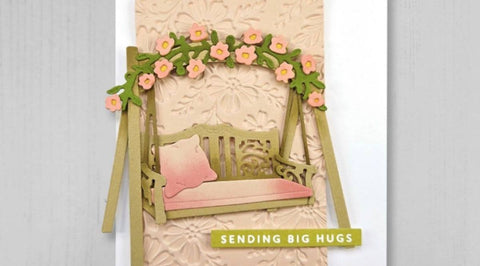
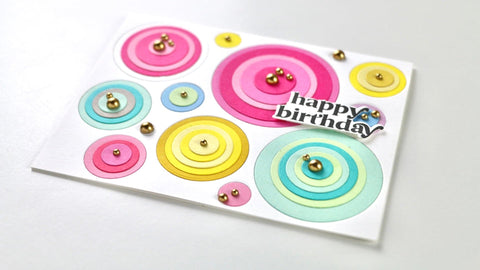

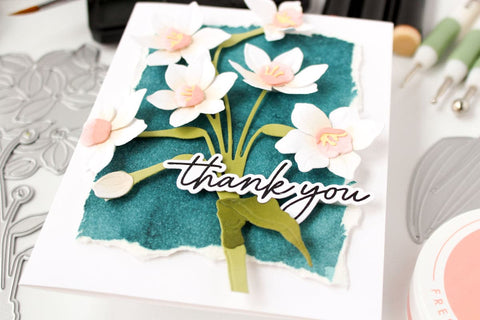



Are water colors alcohol based or is there any natural alcohols in water color formulation?